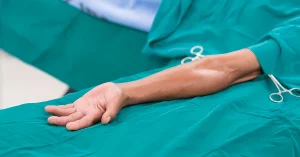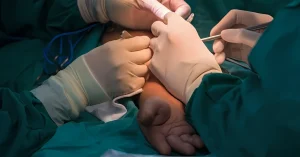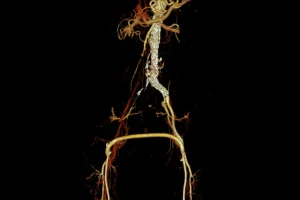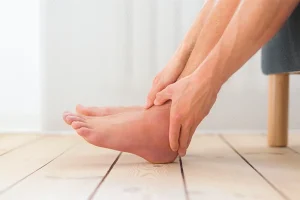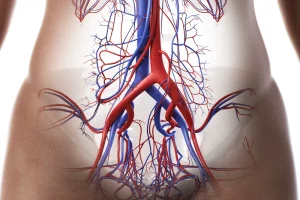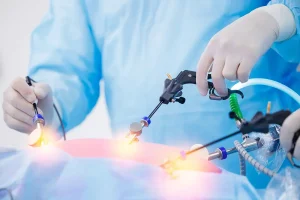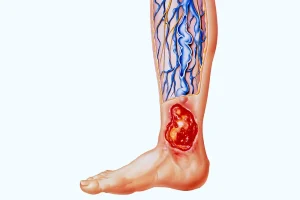Sclerotherapy – Minimally Invasive Treatment for Varicose Veins
Sclerotherapy is the most effective treatment for varicose veins.
Home » Varicose veins » Sclerotherapy – Minimally Invasive Treatment for Varicose Veins
Medical Procedures
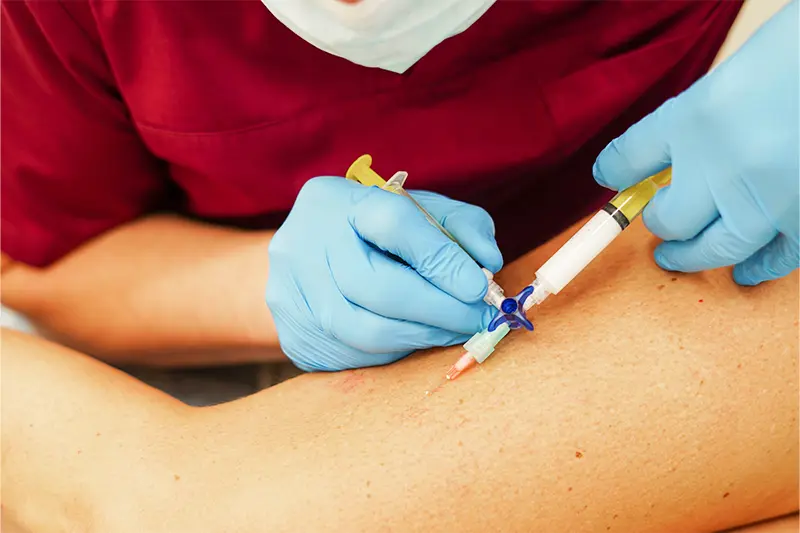
Sclerotherapy is a modern and effective procedure for treating varicose veins and spider veins. At VenArt Clinic, we use the most advanced techniques to ensure excellent results and a quick recovery.
Book an Appointment
What is sclerotherapy?
Sclerotherapy is a minimally invasive technique in which a sclerosing agent is injected into the affected veins, causing them to close and redirecting blood flow to healthy veins.
When is sclerotherapy recommended?
- Small or medium-sized varicose veins;
- Spider veins;
- Patients who want a minimally invasive alternative to traditional surgery.
Benefits of sclerotherapy
- Quick treatment, no hospitalization required;
- Minimization of pain and discomfort;
- Visible results in a few minutes;
- Improvement in the aesthetics of the legs.
How does the procedure work?
- Initial consultation for varicose vein assessment;
- Injection of sclerosing agent;
- Application of compression stockings after treatment.

Recovery after sclerotherapy
- The patient can resume daily activities immediately;
- Avoid sun exposure and intense exercise for a few days;
- Wear compression stockings as directed by your doctor.
Risks and contraindications
- Includes possible risks (e.g., allergic reactions, temporary bruising) and contraindications (e.g., pregnancy, deep vein thrombosis).
Why choose VenArt Clinic for sclerotherapy?
- Extensive experience of the medical team;
- Use of the latest technologies;
- Proven results and positive feedback from patients.
Medical Team
Frequently Asked Questions
What is sclerotherapy and how does it work?
Sclerotherapy is a minimally invasive procedure used to treat varicose veins and spider veins. A sclerosing solution is injected directly into the affected veins, causing them to close. Over time, the treated veins are absorbed by the body, and blood flow is redirected to healthy veins.
Is the sclerotherapy procedure painful?
Sclerotherapy is generally well tolerated by patients. The injections may cause a slight stinging or burning sensation, but the discomfort is minimal and short-lived. If you are sensitive to pain, your doctor may use special techniques to make you more comfortable.
How long does the sclerotherapy procedure take?
A sclerotherapy session usually lasts between 20 and 30 minutes, depending on the number and size of the veins to be treated. Several sessions may be necessary to achieve the desired results.
What is the recovery time after sclerotherapy?
After sclerotherapy, patients can immediately resume their daily activities. However, it is recommended to avoid intense physical exercise and sun exposure for a few days. Wearing compression stockings as directed by your doctor also helps speed up the recovery process.
What are the risks of sclerotherapy?
Sclerotherapy is a safe procedure, but like any medical treatment, it can have some minor risks, such as:
- Redness or bruising at the injection site;
- Temporary swelling or tenderness;
- In rare cases, small blood clots or allergic reactions to the injected substance.
Your doctor will discuss all the risks and benefits with you before the procedure.
Sclerotherapy price?
The cost of a sclerotherapy session varies depending on the number of veins treated and the complexity of the case. At VenArt Clinic, we offer personalized consultations to establish a treatment plan tailored to your needs.
When can I see the results of sclerotherapy?
The results become visible gradually as the treated veins are absorbed. Small veins may disappear completely within a few weeks, and larger ones within a few months. Additional sessions may be necessary for optimal results.
Is sclerotherapy right for me?
Sclerotherapy is ideal for patients with small to medium-sized varicose veins and those with spider veins. However, it is not recommended for pregnant women or patients with certain medical conditions (e.g., deep vein thrombosis). A medical consultation is essential to determine whether the procedure is right for you.

